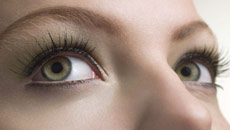Sunlight missing from the lives of busy young women is making them deficient in Vitamin D, which has emerged as a major health issue among them, experts say. Vitamin D deficiency in young girls can precipitate osteoporosis and increase the risk of fractures.
"Vitamin D is a major regulator of calcium metabolism and hence is an important determinant of bone health," Palash Gupta, senior consultant, Orthopaedics, Max Super Speciality Hospital, Shalimar Bagh, told IANS.
Osteoporosis is a skeletal disorder characterized by low bone mass and deterioration of bone architecture leading to increased bone fragility and susceptibility to fractures. Primary osteoporosis refers to a reduction in bone mass related to aging and menopause, whereas secondary osteoporosis results from specific diseases or drugs.
Osteoporosis is also characterized by abnormality in the amount and architectural arrangement of bone tissue.
Estimates suggest that 20 percent of women and 10 percent of men by would be osteoporotic by 2015.
Palash Gupta said: "Judicious exposure of arms and legs or hands to sunlight, typically for not more than 5-15 minutes per day, for 2-3 times per week during spring and summer is all that is required to satisfy the body's requirements."
Anoop Mishra, Chairperson of the Fortis-C-DOC Centre of Excellence for Diabetes, Metabolic Diseases and Endocrinology, said: "It is one of the important health issues in women because of lack of exposure to sunshine due to clothes and lack of outdoor activity".

Vitamin D deficiency is the cause of bone loss (osteopenia and osteoporosis) which leads to fractures, he added.
"Obesity, polycystic ovarian disease (and resultant acne, excess facial hair), menstrual irregularity and difficulty in conception are some of the other health issues facing women," he said.
According to Raju Easwaran, senior consultant, orthopaedics, Max Super Speciality Hospital, Shalimar Bagh, "women are especially prone to developing osteoporosis or weak bones after they lose the protective effect of oestrogen following menopause".
"Compounding this is the rampant Vitamin D deficiency that is seen in women of all age groups. An Indian study found that 70-75 percent of women in the post-menopausal and reproductive age groups are deficient in Vitamin D," he said.
Eswaran said women should also be concerned about Vitamin D levels for several reasons.
"There is good evidence that sufficient levels of Vitamin D (>30ng/ml) are associated with lower risk of serious pregnancy complications like pre-eclampsia, decreased chances of caesarean section and reduced incidence of breast cancer," he added.
Other diseases like rheumatoid arthritis and multiple sclerosis are also lower in women with normal vitamin D levels.





